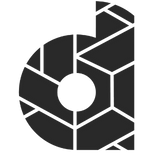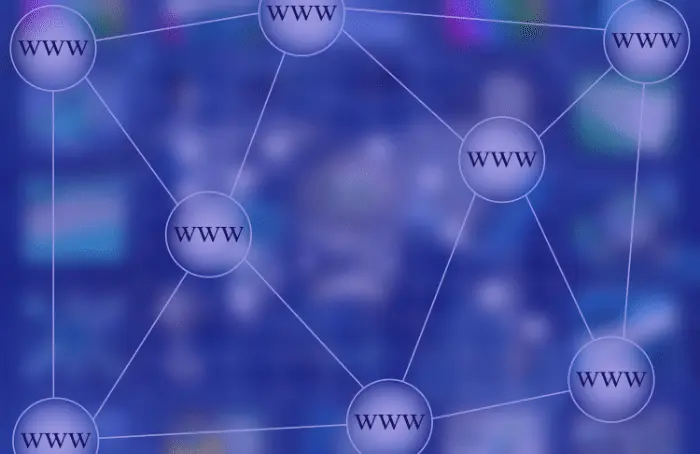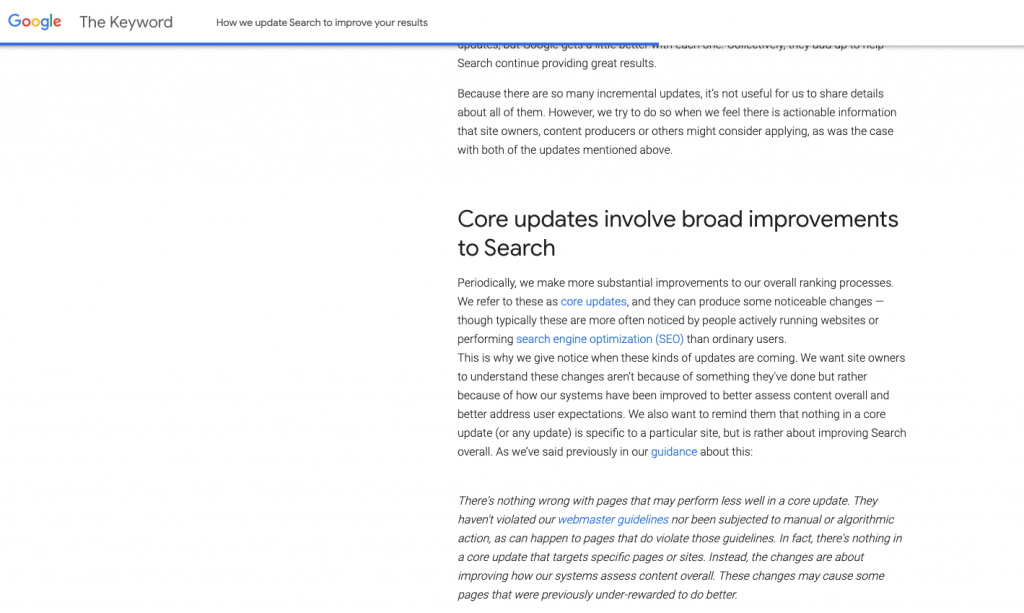Internal links are hyperlinks that point to pages on the same domain. These are different than external links, which link out to pages on other domains. Find out how and where to use them.
Why are internal links important for your SEO?
Internal links give Google an idea of the structure of your website. They can establish a hierarchy on your site which allows you to provide the most important pages and posts more link value than other pages which are less valuable. This means that if you use the right internal linking strategy, you can boost your SEO.
If you are interest in more information about SEO, then read our article ‘SEO Beginner’s Guide‘.
What is an internal link?
An internal link is any link from one page on a website to another page on the same website. Users and search engines use links to find content on your website. Your users use links to navigate through your site and to find the content they want to find. The search engines also use links to navigate your site. They won’t see a page if there are no links to it.
There are several types of internal links. In addition to links on your homepage, menu, post feed, etc, you can also add links within your content. Those are called contextual links. Contextual links point your users to interesting and related content. You might have notice by now that we have done the same here in this article.
They also allow search engines to find out what content on your site is related and determine its value. The more links a significant page receives, the more important it will seem to search engines. This is why a good internal linking structure is so important for your SEO.
Internal links vs. external links
Internal links connect pages and posts on your website, and external links connect your pages to other websites.
Why are links important to Google?
Internal links are important to Google because they help to understand and rank your website better. Depending on the text of the anchor link, you tell Google what those pages are about. Internal linking is an essential factor for Google and other search engines.
Google follows links to discover content on websites and to rank this content in the search results. Internal linking is something you control as the owner of a website. With the correct internal links, you’ll guide your visitors and Google to your most important pages.
Relationships between content
Google crawls websites by following links, internal and external, using a bot called Googlebot.
Googlebot is the generic name for Google’s web crawler. Googlebot is the general name for two different types of crawlers: a desktop crawler that simulates a user on desktop, and a mobile crawler that simulates a user on a mobile device.
Google Search Central
This bot arrives at the website’s homepage, renders the page, and follows the first link. By following links, Google can work out the relationship between the various pages, posts, and other content. Google finds out which pages on your site cover a similar subject matter.
Link value
The homepage of a website has the most significant link value because it has the most backlinks. That link value will be shared between all the links found on that page. The link value passed to the following page will be divided between the links on that page, etc.
Therefore, your newest blog posts will get more link value if you link to them from the homepage instead of only on the category page. Keep in mind that Google will find recent posts quicker if they’re linked to from the homepage. If you check our homepage, you will find that we show our recent posts.
When you get the concept that links pass their link value on, you’ll understand that more links to a post mean more value. As Google deems a page that gets lots of valuable links as more important, you’ll increase the chance of that page ranking.
Setting up your internal linking strategy
It’s crucial for your site’s SEO to evaluate and improve internal linking strategy regularly. By adding the right internal links, you make sure Google understands:
- the relevance of pages
- the relationship between pages
- and the value of pages
To set up your internal linking strategy, there are several things to take into account. How you go about it exactly, of course, depends on your site and your goals, but the following steps are a good rule of thumb.
1. Determine the ideal structure for your site
On top of the structure is your homepage, then below are some categories, and further down, there are individual posts and pages.
If you do it well, your website’s menu should reflect this structure.
2. Decide what your most important content is
You should determine what your most important content is. This should be your best and most complete content. It’s the content you want people to find when searching for topics or products you specialize in.
Because you want to let Google know that this is your most important content, you need to add many links to it. There are various spots from where you can link to your cornerstone content. Here, we’ll give the most common options, from your post’s copy to your navigation.
3. Add contextual links
When you’ve written various articles about a certain topic you should link them with each other. This will show Google that those articles are topically related. You can link directly from sentences in your copy or add links at the end of your post.
Moreover, you want to show Google which articles are your cornerstone: your most complete article on this topic. You have to add a link to the cornerstone in all of the articles on this topic to do so. And don’t forget to link back from the cornerstone to the individual posts.
3. Link hierarchical pages
Ensure that parent pages are linked to their child pages and vice versa if you have hierarchical pages on your website. It makes perfect sense to connect these pages together on a well-organized site.
5. Consider adding a related post section
There are many plugins and modules that add complete related posts sections to your posts. If you use one, we recommend testing whether the related posts actually are related posts. If you’re not sure, linking to posts manually is probably best.
Check below this post to see our related articles.
6. Try adding navigational links
Links from topically-related posts and pages can reinforce the authority of your cornerstone content, as can links from the homepage and top navigation. This should be done with the most important posts and pages for your company. These posts or pages will gain a lot of link value and become stronger in Google’s eyes.
7. Consider adding links to popular or recent posts
The last option to mention is creating internal links to your website’s most popular or newest posts. Preferably create these sections in the sidebar or the footer of your website to have them appear on all pages and posts.
We use them even on every article in the sidebar.
As link value passes to these most popular posts from a lot of different pages, they get a boost. Besides that, the posts will be easier for visitors to access, which will increase traffic – and more traffic is a positive sign to Google.
Anchor texts
Once you have decided which links should be on a page and which pages should get link value, it’s important to use the right anchor text. The anchor text is the clickable text that visitors see. For example, the anchor text of the two internal links in the example below are ‘How Google updates Search’ and ‘our blog’:
Google is smart enough to understand that the content around the anchor text says more about the relevancy of a keyword than the anchor text itself. Ensure that the anchor text looks natural in your copy and don’t spam by using the same word over and over again.
Pro Tip: Don’t add the same anchor text to every link.



